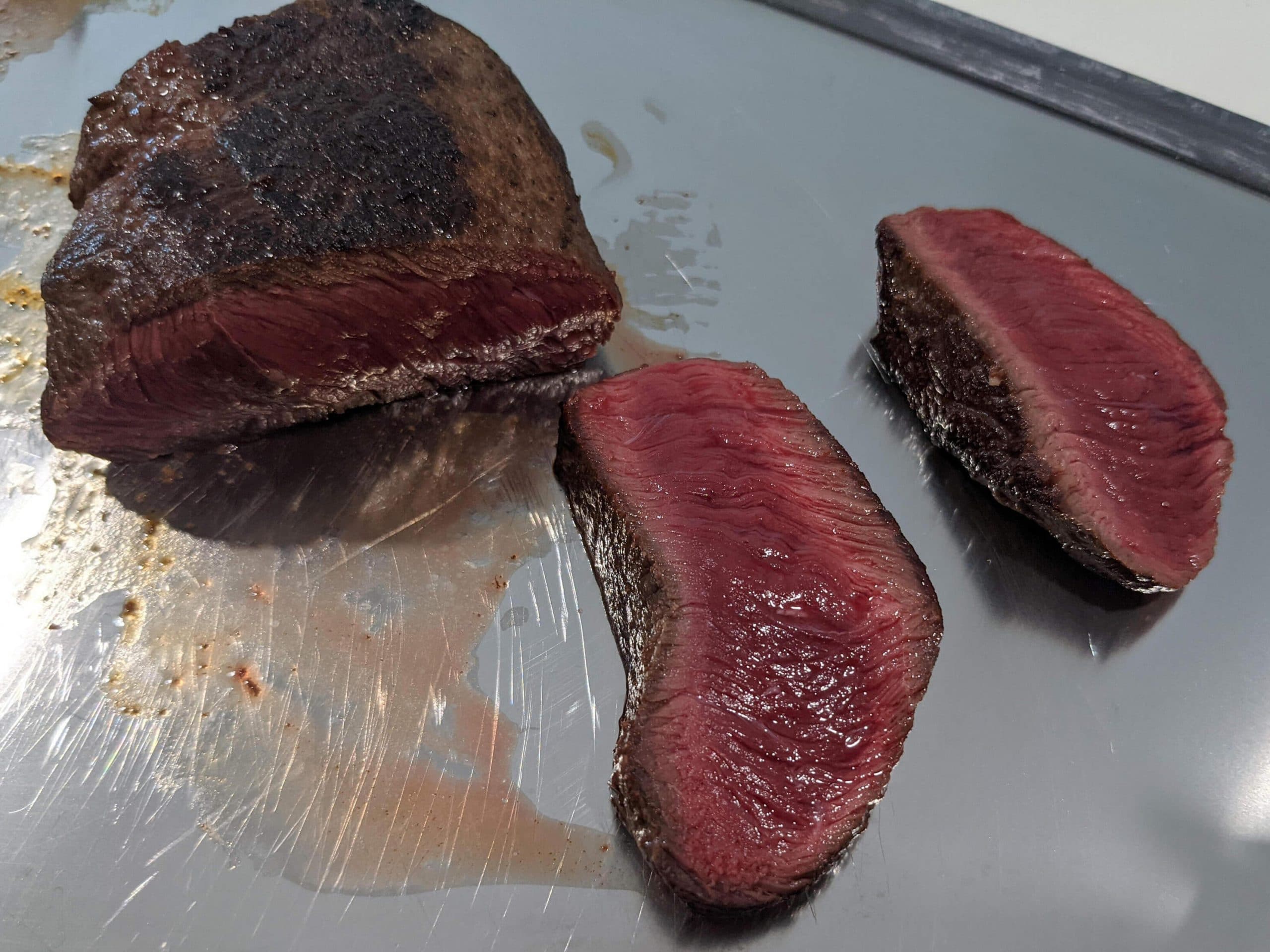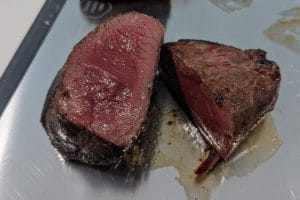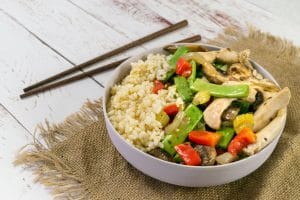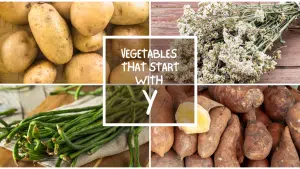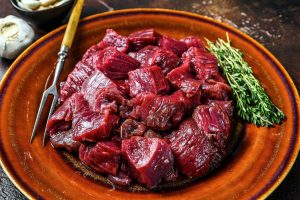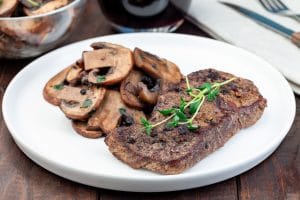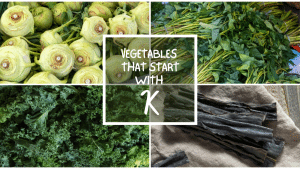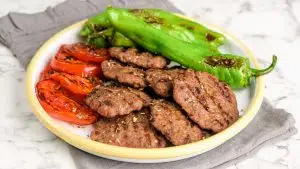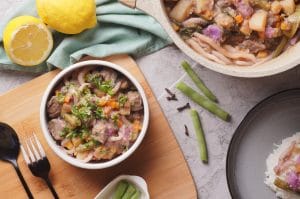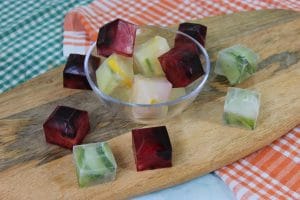All About Yak Meat
Important Note: When you buy through our links, we may earn a commission. As an Amazon Associate we earn from qualifying purchases. Content, pricing, offers and availability are subject to change at any time - more info.
Do you love beef but have a hard time handling its higher fat content? Is your doctor telling you it’s time to give up beef, but you can’t live without red meat? Then, you might want to consider high-quality yak meat. This beef alternative is rapidly gaining popularity and becoming a fascinating option for many. Here’s what you need to know about this meat.
- What Does Yak Meat Taste Like? A Comparison
- Where Does Yak Meat Originate?
- What is Yak Fiber?
- Is Yak Meat Legal?
- Where to Buy Yak Meat
- How Much Does Yak Meat Cost?
- Is Yak Meat Healthy?
- How to Cook Yak Meat
- Traditional Ways to Use Yak Meat
- Does Yak Meat Meet Religious Meat Restrictions?
- Try Out Some Yak Today!
What Does Yak Meat Taste Like? A Comparison
Yak meat is considered primitive red meat and has a texture and overall feel similar to that of grass-fed beef and bison. That’s because its diet is very similar to that of those animals, focusing primarily on grass and other types of growth. As a result, their meat and fat tend to share a very similar overall texture and taste, particularly the choicest cuts (which we’ll get to soon).
Compared to beef or bison, yak meat has a sweeter and more delicate taste. Think of your average cut of beef and its density of flavor. Even if you don’t eat a lot of it, beef just feels dense and thick. That’s partially due to the texture of the meat and also due to its relatively high-fat content. Beef also has a medium level of moisture content, meaning it can be a little dry before cooking.
By comparison, yak has a higher moisture and iron content, meaning it is often richer and lighter in taste. Its fat content is similar to that of a bison or elk, creating a healthier alternative to beef. These elements make yak meat incredibly juicy and flavorful, even compared to beef. The meat will have a sweeter and somewhat tangier overall taste compared to beef or bison.
And don’t worry: it doesn’t have much chicken aftertaste, unlike some other exotic meat. Although its diet is relatively similar to that of a chicken in some ways, its cuts are thicker, the meat richer with fat and moisture, and the overall taste sharper and sweeter, producing a great beef alternative option to try.
Where Does Yak Meat Originate?
Yaks originate in Asian nations, primarily throughout the Himalayan mountain range area. Here, they are raised and eaten in a similar way that America raises cows. For centuries, they were the primary meat source for the region. Their large size provided a high quantity of food, their docile personalities made them easy to manage, and their thick coats were perfect for making clothes and other items.
And for most of human history, yak meat was eaten primarily in these regions and rarely anywhere else. As a result, their population remains relatively high and is carefully balanced via careful farming and butchering methods. However, they have recently been gaining in popularity all over the world. Places like Japan have been importing yak meat to create fascinating variations on traditional dishes.
Yak meat has even spread to the United States, Canada, and Mexico in the last decade or so. Farms have popped up across these countries in areas with the proper temperature for raising yaks. They prefer reasonably mild or even cold temperatures. A little bit of snow doesn’t bother the yak due to their thick fur coat. As long as they’re fed and kept safe from extreme elements, they’re healthy.
In regions outside their original range, most people eating yak are those interested in beef alternatives. For example, people interested in richer and sweeter beef tastes enjoy yak meat. It goes well in just about any beef-oriented dish. Yak burgers are trendy, though yak tacos and other dishes bring out its texture and flavor just as well as a traditional burger meal.
Yak meat popularity is also fueled heavily by its reputation as a healthier beef alternative. It doesn’t have the same amount of fat, has a comparable protein level, and contains more vitamins and minerals. We’ll take a look at this factor later on in this article, giving you a more in-depth examination of its healthiness. For now, let’s take a look at a related topic: yak fiber.
What is Yak Fiber?
The increasing popularity of yak meat throughout the nation has also heralded a unique new focus on yak fiber. This material is being sold in many shops, particularly those that already offer yak meat. Yak fiber is more or less what you would imagine: it is a sewing material made out of the hair harvested from yak coats. This fiber is surprisingly strong, durable, and easy to work with in many fields.
For example, a growing trend of yak-fiber products has been hitting more luxury-oriented markets. Yak fiber is considered something of a high-end material due to its strength. However, there’s an element of trend-chasing here, as well. People who can afford something unique, like yak-fiber clothes, will spend high amounts of money to stand out from others. But just how is yak fiber being used?
It’s not uncommon to see yak fiber ropes, clothes, tents, blankets, purses, scarves, socks, and much more. If you can make it with traditional fibers, someone is probably making a yak-fiber alternative. This unique benefit is another reason why yak meat has become a popular alternative to conventional beef. After all, you cannot harvest a cow’s fur to produce sewed clothing in the same way.
Of course, you can harvest a cow to produce leather and other similar products. However, yaks can also be harvested similarly. As a result, those concerned with using all elements of animals when butchering or gathering them have promoted yaks as a great alternative to cows. Their popularity is increasing but is still nowhere near as prevalent as cows throughout the western nations.
Is Yak Meat Legal?
There’s a lot of gray area surrounding yak legality. In countries where yak is already commonly grown and harvested, yak meat is legal and common. In Western countries, where yak is less common, the legality of yak meat is variable. Let’s look at the United States’ rules and regulations about yak meat to get an idea of how many countries handle this meat.
First, yak meat cannot be imported legally into the country from anywhere else, even nations on the same continent. That’s because the US has a law that bans bringing in meat or any other products from countries that were impacted by foot and mouth diseases and other conditions common in many types of cattle. And many of the yak-exporting countries around the world meet these criteria.
Don’t fear, though! Yak meat is not illegal in America! There are no restrictions on people raising yaks, butchering them for meat, and selling the meat. That’s why a large number of different yak farms have popped up across the continent to meet this need. These farms focus on providing yaks with an environment very similar to their home countries, which helps produce higher-quality meat.
Finding yak meat in your local supermarket is not a likely proposition, though. It’s still something of luxury meat, the kind of thing the average person probably rarely buys or only gets for special situations. Specialty stores may have yak in limited amounts, depending on its location and the type of meats it sells. For example, some exotic meat shops likely have at least some yak available.
Where to Buy Yak Meat
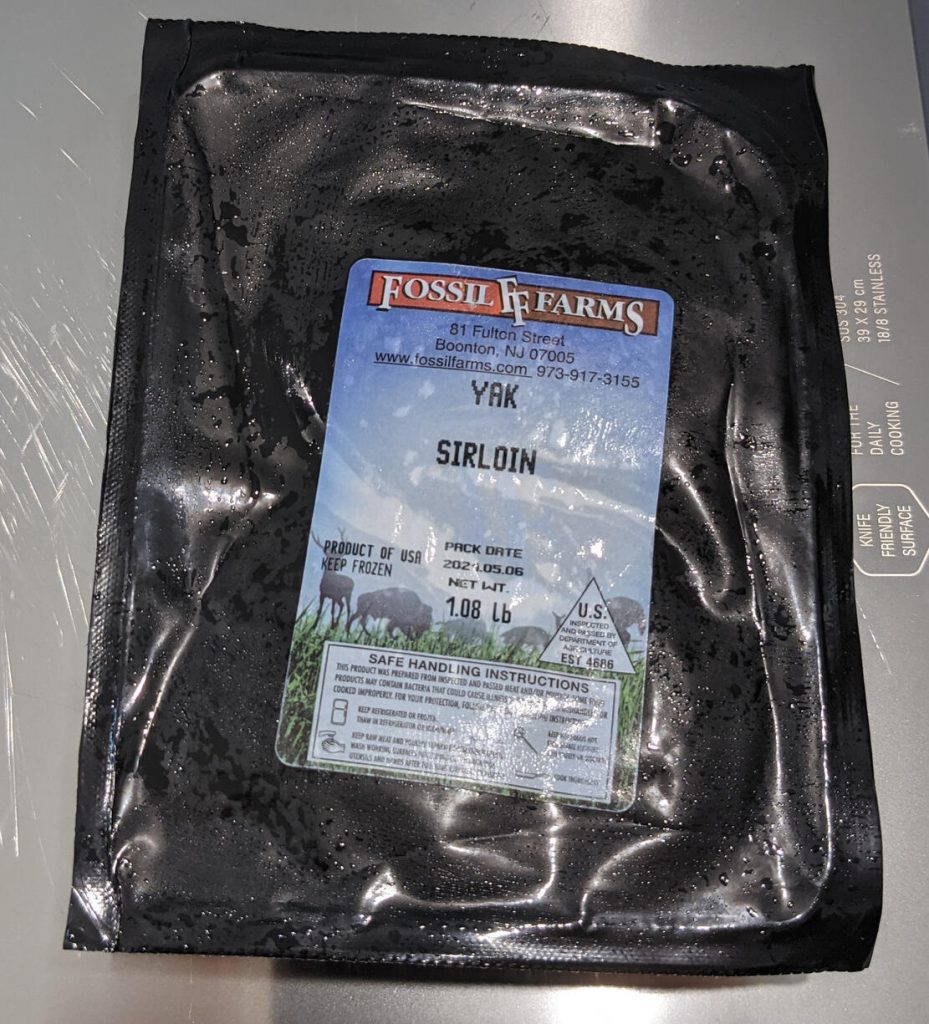
Typically, buying yak meat must be done online in the US. Though you can often purchase meat at yak farms or their associated stores, the easiest step is simply to buy it online and get it shipped directly to your home. Thankfully, there are many shops available that provide this service. A few of the most popular and high-quality options that we could find include:
- Yak n Radish – This farm originated over a century ago, starting as the Fenn Family Farm. They originally grew dairy, chickens, pigs, and more. The original farm closed in the 1960s but reopened in 2012 and has been producing various meats, specializing in yak.
- Fossil Farms – Fossil Farms focuses on sustainability in all their meats, specializing in exotic meats that help cut down on harmful beef production. They raise their yaks in open areas and focus on animal welfare, ensuring that they produce ethical and high-quality meat for buyers.
- Delyaks – Delyaks is located in Colorado, which provides a unique environment for raising yaks. The high mountains and cooler temperatures work perfectly for this breed. They also offer yak skulls, leather, wood, hair, and milk, making it an excellent one-stop shop for your yak needs.
- Firebird Farms – This Oregon farm operates between 4,000 to 5,000 feet, providing a very yak-friendly environment that these animals adapt to very well. They focus on a smaller herd size (around 60 at any time) and treat them very well, spending time with each yak and ensuring they have a good life.
- Alaska Yaks – Few states in the US possess a yak-perfect environment. However, Alaska is as close as they get to their preferred temperature range. With plenty of snow, colder temperatures, and high elevations, Alaska Yak produces high-quality meat at very reasonable prices.
Each of these different shops has varying products available. Some sell yak by the pound, while others sell choice cuts. Many even sell related yak products, such as fibers, leather, and more, as you may have seen. When choosing a yak meat source, make sure to research not only their products but also their prices. Yak meat cost can vary depending on many different factors.
How Much Does Yak Meat Cost?
Yak meat comes in many different price varieties, depending on the cut and the shop you visit. For example, we researched one shop and found that they were selling yak burger patties for $8.99 per pound. The same site sold boneless roasts at $8.49 per pound and cube steak at $7.99 per pound. The quality of the cut impacts this price, as well as the quality of the meat.
For example, the price went up considerably when buying top sirloin fillet. These were as much as $19.99 per pound, with yak skirt and flank steak costing around $15.99 per pound. Note: the packages containing many of these products cost much more than the per-pound price. Typically, many shops sell yak meat products in multi-pound products, meaning you pay more and get more.
Often, shops include a sampler pack that contains a variety of different cuts. These packs cost as much as $89.99 to $99.99 but offer various yak options. For example, you might get multiple ground patties, various fillet cuts, steaks, and much more. This option is considered a good choice for those getting into yak meat, as it makes it easier to pick a cut that fits their needs.
Buyers must also note that orders often have specialized packaging and preparation steps that require extra cash. These costs are typically not included in the meat prices, so make sure you’re careful when buying. For example, paying at least $24-30 for shipping and handling is not uncommon. Why? Shops place your meat in an insulated container with dry ice to keep it fresh while it ships.
Is Yak Meat Healthy?
The primary reason yak meat is becoming so popular is its higher health level than similar meat products. For instance, some experts state that it’s healthier than beef and skinless chicken, and many types of fish. That may be hard to believe, but we’ve found it’s the case. Let’s take a look at just why yak meat is such a healthy alternative.
First, yak meat is naturally very lean and is typically 95-97% fat-free. As a result, it’s excellent for those trying to cut back on their unhealthy fat intake. Many types of chicken and fowl (such as turkey) have just a bit more or similar amounts of fat. However, they don’t have the kind of grass-fed beef taste you find with yak. If you want a nearly fat-free beef alternative, yak is a great choice.
Yak is also very high in various vital oils and vitamins, much more so than beef in general. For instance, it contains higher percentages of Omega 3 fats, which are commonly found in fish. These oils help keep your body healthy and improve overall mental health. Yak meat also contains a good number of conjugated linoleic acid, oleic acid, and stearic acid.
These acids may not be big-name nutrients to many people. They are like Omega 3 oils in that they are healthy fats that improve both your physical and mental health. By contrast, yak meat is deficient in unhealthy palmitic acid. Beef is much higher in this acid than yak (120% more based on the percentage of meat). In this way, yak is much better for those low on healthy fats.
Even better, yak has more protein, minerals, and vitamins than beef and lower calorie content. Combine this with a lower level of unhealthy cholesterol, minimal saturated fats, and few unhealthy triglycerides, and you have a fantastic meat option for those trying to lose weight. It also goes well for those who love beef but who want a fat-free alternative.
Yak farmers also typically focus on healthier growing environments, using no additives, growth hormones, steroids, antibiotics, animal byproducts, or other chemicals. While that fact may not be actual for every yak farmer, most are people interested in producing safe, organic, and healthy meat. As a result, it’s a great option for those worried about big-business farming.
How to Cook Yak Meat
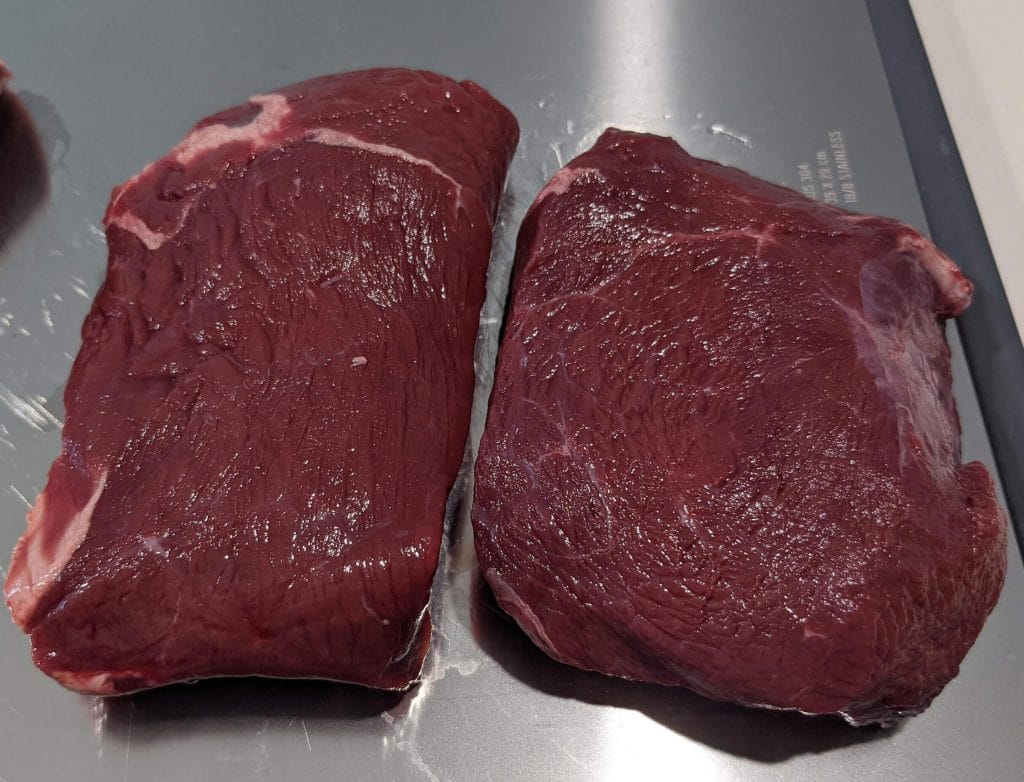
Yak meat can be booked using pretty much any method you use to prepare beef. However, there are a few things to keep in mind when thawing or preparing yak. First, you must turn it four times (twice while thawing and twice while cooking). These steps help to minimize any moisture or taste loss you’d otherwise experience. Fresh yak need not be thawed if not frozen but should be turned twice while cooking.
You typically want to keep the cooking temperature relatively low compared to meats like chicken or fish. In this way, it compares to beef or bison because you need to avoid overcooking or even burning the meat. Yak is best to about a medium redness or so. Generally, you want to cook it with temperatures around 350 degrees Fahrenheit. That helps to slow-cook the meat and maximizes your taste.
While grilling steaks or any other yak meat, add spices to the meat while it is cooking. Doing so helps to trap the moisture of the meat and infuse the herbs directly into its textures. While yak meat tastes excellent on its own, many people like adding a little sea salt, pepper, or garlic to the surface. Remove your steak from the grill when it hits five degrees before your desired temperature.
Why? The meat will naturally cook while it sits and raise another 5-10 degrees. Let it sit for at least 5-10 minutes during this time to reach the level you want. The minimum interior temperature is 120 degrees Fahrenheit for rare steaks, 125 degrees Fahrenheit for medium-rare, and 130 degrees Fahrenheit for medium. Well-done yak is not very good, so stick to medium textures to get the best results.
Traditional Ways to Use Yak Meat
Yak meat can be used in any of your favorite beef dishes. Burgers give you a rich and thick slab of yak meat, while you can also use it as a ground meat option for tacos, burritos, or other types of dishes. Yak is also used in a myriad of tasty traditional Tibetan dishes. Tibet is by far the most common consumer of yak, and they produce some exciting dishes that you can try at home:
- Thukpa – Make this dish by mixing yak meat, Tibetan vegetables, and noodles into a soup. You can also add chili powder or masala to produce a little extra spice. This meal is perfect for cooler winter days.
- Shabhaley – Requires bread stuffed with seasoned yak and cabbage. The spices vary and can be chosen according to your taste. Fashion the read into round shapes and deep or pan fry for great results.
- Laphing – Do you like summer soups? Then this might be the yak-meat choice for you. It uses rich noodles made from mung bean, potato, or wheat flour. Add soy sauce, garlic, and peppers to flavor.
- Thenthuk – Many of the best Tibetan meals are soup, and this option is no different. Add yak meat stock, winter vegetables, and homemade noodles, and enjoy!
Does Yak Meat Meet Religious Meat Restrictions?
Though neither Jewish nor Muslim traditions specify yak in their meat restrictions, their rules do dictate what kind of meat qualifies. For example, yak ritually slaughtered and butchered according to Jewish tradition is considered kosher. That’s because the yak is a ruminant with multiple stomachs that chews cud and has a split cloven hoof. This also means that its milk is kosher.
Muslim law is less precise here. According to their tradition, Allah allows Muslims to eat animals with a cloven hoof. This includes domestic and wild animals, such as cows, sheep, gazelles, and deer. Yak also does not possess fangs, which is not allowed in Muslim food traditions. As a result, yak should be halal for most Muslims. Christians following Lent should still avoid yak on Fridays, though.
Try Out Some Yak Today!
If you’re interested in yak, check out any shops listed above and purchase choice cuts that you know you’ll love. Try out any of the recipes mentioned above or experiment with your favorite spices. You might be surprised at just how much you love this rich, sweet, and healthy red meat!
